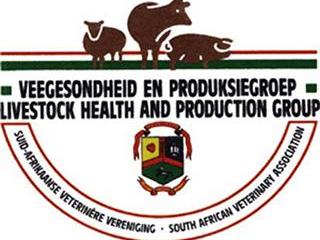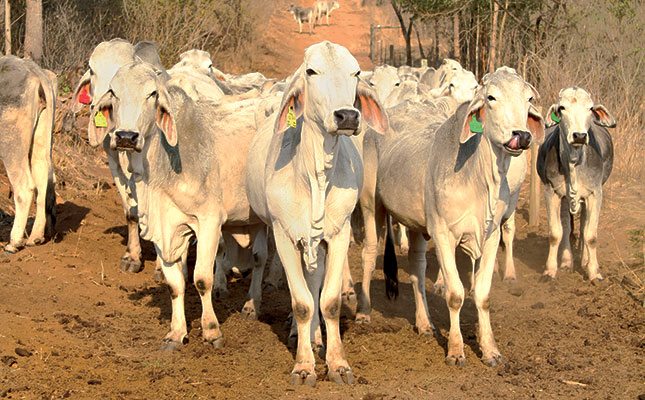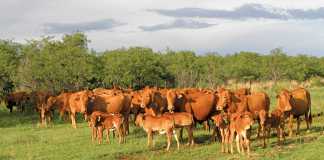
*The first cases of lumpy skin disease were reported from Clocolan and Hoopstad (Free State); Dundee, Estcourt, Pongola and Vryheid (KZN); Stutterheim (Eastern Cape); and Malmesbury and Wellington (Western Cape).
Time is running out for farmers who haven’t vaccinated their cattle against this disease. It must be remembered that a vaccine doesn’t protect an animal. It’s the immune system of the animal that comes into action after vaccination that protects it. Also bear in mind if an outbreak of lumpy skin disease occurs on a farm the virus can be transmitted by using the same needles on animals.
* Another insect-transmitted disease, bovine ephemeral fever (three-day stiff sickness), was reported in Mbombela (Mpumalanga); Onderstepoort (Gauteng); Clocolan and Frankfurt (Free State); Pongola (KZN); Stutterheim (Eastern Cape) and Plettenberg Bay (Western Cape).
The hardest hit are usually big bulls and dairy cows, leading to a loss in milk production. It’s therefore advantageous to vaccinate these animals.
* Blue tongue has been reported from Onderstepoort (Gauteng), Clocolan (Free State), Bergville and Vryheid (KZN).
Do not vaccinate pregnant ewes in the first trimester, as the vaccine may interfere with the development of the foetus. Ram’s semen, meanwhile, will be affected by the live blue tongue strains in the vaccine. They therefore should be immunised after they’ve serviced the ewes.
* A case of horse sickness was reported in an unvaccinated young foal in Balfour, Mpumalanga. Hopefully all horses have been vaccinated by now.
However, if an outbreak occurs, and animals haven’t been vaccinated, move them away from low lying areas where the insect vectors are more numerous. Pyrethroids including deltamethrin can also be sprayed on the animals to control midges that bite animals.
* Tick numbers are increasing and so are tick-transmitted diseases, such as African and Asiatic red water, heartwater and anaplasmosis.
The acaracides groups that can be used for tick control are: organophosphates; pyrethroids; amidines; acaracide growth regulators; and macrocyclic lactones (only registered for blue tick control).
Certain blue tick strains are resistant to some of the active groups and tests can be done to assess the status of resistance on your farm. Contact your vet for help here.
* Wireworm and brown stomach worm infestations have been reported after good rains. Areas include Standerton and Volksrust, where wireworm infestation is still under control (Mpumalanga); Villiers (Free State); Bergville (KZN), where brown stomach worm numbers are increasing on pastures; and Swellendam (Western Cape).
Regular checks using the Five Point Plan and faecal egg counts should be done. Once again, consult your vet to assist you with your management programme and choice of the correct active to use to control internal parasites.
* Up to 400mm rain fell in Harrismith in the Free State during November and the weather was cool. As a result sheep kept in small camps have severe roundworm infestations. Farmers must monitor their ewes with lambs closely for internal parasites, and strategic dosing should be done if necessary.
* Outbreaks of clostridial diseases, such as gas gangrene, red- and bloodgut, pulpy kidney, tetanus and botulism, have been reported in many areas. Proper vaccination programmes could have prevented this. Visit your vet to update your programmes.
* Despite repeated warnings, venereal diseases (trichomonosis and vibriosis) are still on the increase. Consult your vet and decide when you’re going to test your bulls for these diseases.
* A spate of dystocias have been reported from all over the country. Have all your heifers examined for too-small pelvises and cull them.
* Poisonings that were reported are: tulip, gifblaar, Senecio, Brassica (cabbages), rye grass toxicity, witstorm, inkbessie (Cestrum), Lantana, chincherinchee, acidosis and copper.
* If you have problems with Enzootic bovine leukosis, or want to know more about this disease, contact a vet, or Dr Jan du Preez at the MPO institute for dairy technology at 083 656 3638.
Feedlot report
Sheep:
* Feedlots experienced a good month.
* A few deaths occurred due to weak and undernourished lambs that were bought in and were unable to adapt.
* A few groups came from areas where veld fires had destroyed the grazing. These sheep were in poor condition and highly susceptible to coccidiosis and pulpy kidney.
Cattle:
* Feedlots experienced a good month, given the absence of lung diseases.
* Some nutritional disturbances were seen, such as bloat and acidosis.
* Botulism occurred on a backgrounding farm, where calves ate bones due to poor grazing, while Slangkop caused the deaths of calves on a hired farm.
* A few deaths occurred due to black quarter.
Click on the link to view disease outbreaks in the your region.













